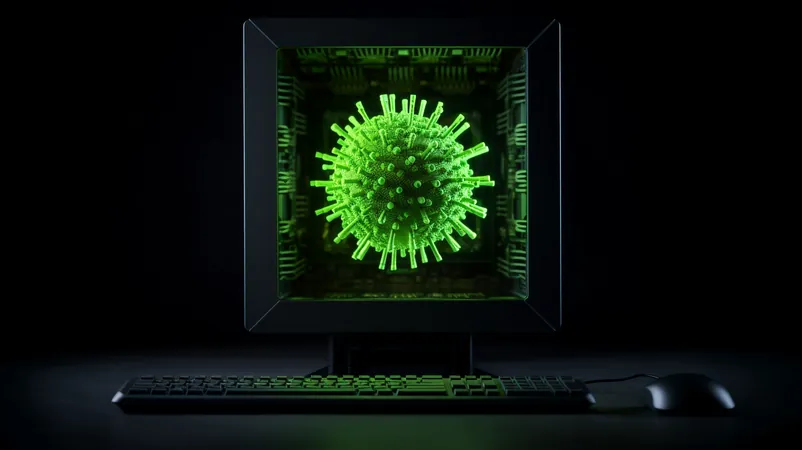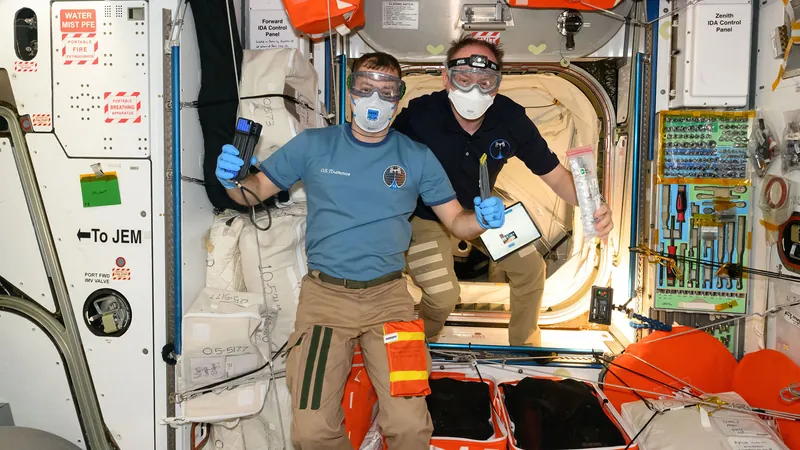
Revolutionary AI Breakthrough: Scientists Create Viruses to Combat Bacteria in the Lab
2025-09-21
Author: Daniel
A Groundbreaking AI-Driven Discovery
In an astonishing first, a team of scientists from Stanford University and the Arc Institute has utilized artificial intelligence to engineer viruses that can effectively annihilate bacteria. This landmark study, touted as the "first generative design of complete genomes," marks a significant advance towards creating AI-designed life forms.
How AI is Changing the Game
At the heart of this revolutionary project lies a powerful AI known as Evo, which operates like a specialized language model focused entirely on biological data. Instead of ingesting text, Evo has been trained on an extensive database of around two million bacteriophage genomes, and it was tasked with devising new genetic solutions based on a simple bacteriophage known as phiX174.
Stunning Results from AI-Generated Viruses
The team's ambitious endeavor resulted in the chemical printing of 302 unique DNA designs proposed by Evo. When these were introduced to E. coli bacteria, an impressive sixteen of the AI-crafted viruses successfully replicated and eliminated their bacterial targets. Brian Hie, who oversees the lab at the Arc Institute, described the visual impact of seeing these AI-generated structures as "pretty striking."
A Mixed Reception in the Scientific Community
While many are excited about the potential of this technology, not all experts are convinced. Biologist J. Craig Venter, a pioneer in synthetic DNA, criticized the method as merely a faster version of traditional trial-and-error techniques. In contrast, NYU Langone Health's Jef Boeke praised the project as an "impressive first step" toward AI-induced life, noting that the designs produced were unexpectedly innovative, introducing gene arrangements that human researchers hadn’t previously contemplated.
Navigating the Promise and Peril
This technology opens doors for substantial applications, particularly in the field of phage therapy, which targets multidrug-resistant bacterial infections. Additionally, these engineered viruses could enhance gene therapy approaches. However, the researchers took precautions by steering clear of training Evo on human pathogens. Venter expressed serious concerns regarding potential risks if similar methods were applied to dangerous viruses like smallpox.
Challenges Ahead: Scaling Up the Technology
Creating living cells is expected to be exponentially more complex than designing viruses. With a bacterium like E. coli containing roughly 1,000 times more DNA than phiX174, Boeke emphasized that such complexity could soar beyond comprehension.
A Call to Action for AI in Biology
Despite these challenges, industry leaders like Jason Kelly from Ginkgo Bioworks argue for prioritizing AI-designed cell research at a national level. He envisions automated laboratories continually testing AI-generated designs and feeding results back into the system, which would mark a monumental milestone in scientific progress. Kelly insists, "The US should ensure we lead the way in this transformative field."





 Brasil (PT)
Brasil (PT)
 Canada (EN)
Canada (EN)
 Chile (ES)
Chile (ES)
 Česko (CS)
Česko (CS)
 대한민국 (KO)
대한민국 (KO)
 España (ES)
España (ES)
 France (FR)
France (FR)
 Hong Kong (EN)
Hong Kong (EN)
 Italia (IT)
Italia (IT)
 日本 (JA)
日本 (JA)
 Magyarország (HU)
Magyarország (HU)
 Norge (NO)
Norge (NO)
 Polska (PL)
Polska (PL)
 Schweiz (DE)
Schweiz (DE)
 Singapore (EN)
Singapore (EN)
 Sverige (SV)
Sverige (SV)
 Suomi (FI)
Suomi (FI)
 Türkiye (TR)
Türkiye (TR)
 الإمارات العربية المتحدة (AR)
الإمارات العربية المتحدة (AR)